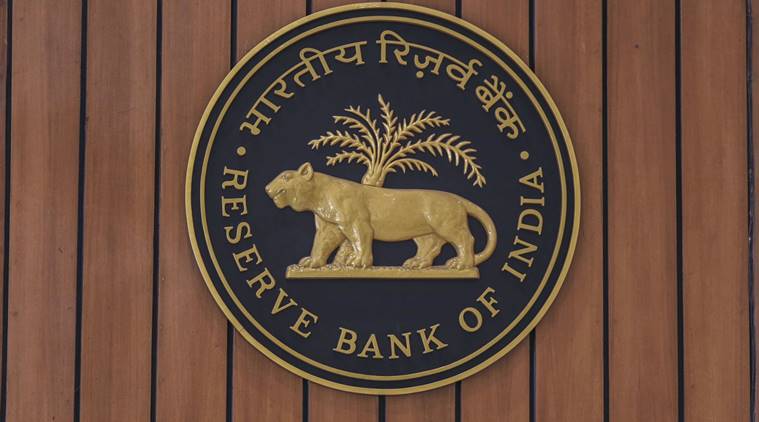 A sign for the Reserve Bank of India (RBI) sign is displayed inside the central bank’s headquarters in Mumbai, India, on Thursday, Feb. 6, 2020. (Photographer: Dhiraj Singh/Bloomberg)
A sign for the Reserve Bank of India (RBI) sign is displayed inside the central bank’s headquarters in Mumbai, India, on Thursday, Feb. 6, 2020. (Photographer: Dhiraj Singh/Bloomberg)
Citing concerns over an “elevated” inflation level, the Monetary Policy Committee of the Reserve Bank of India kept interest rates on hold Thursday even as it vowed to keep policy sufficiently loose to help revive the coronavirus-battered economy. Accepting a key demand of lenders and the corporate sector, the central bank cleared a one-time restructuring of loan accounts to bail out stressed borrowers, including personal, small and medium loans.
The details of the loan restructuring scheme — expected to kick in after the moratorium on loan repayments ends August 31 — will be worked out by a committee headed by former ICICI Bank Chairman KV Kamath. The RBI also continued to provide support on the liquidity front and opened a new targeted window for small lenders. The policy panel, headed by RBI Governor Shaktikanta Das, said that given the uncertainty surrounding the inflation outlook and taking into consideration the state of the economy, it was prudent to pause and remain watchful of incoming data.
The central bank kept the repo rate (rate at which banks borrow from the RBI) unchanged at 4 per cent and the reverse repo rate (rate at which banks deposit excess funds with the RBI and earn interest on it) at 3.35 per cent.
Retail inflation, measured by the Consumer Price Index, rose to 6.09 per cent in June from 5.84 per cent in March, breaching the central bank’s medium-term target of 4 per cent, with a band of plus or minus two per cent.
The six-member RBI panel expects the real GDP growth to be negative for the year 2020-21 as a whole. “An early containment of the Covid-19 pandemic may impart an upside to the outlook. A more protracted spread of the pandemic, deviations from the forecast of a normal monsoon and global financial market volatility are the key downside risks,” the MPC said.
The RBI panel, which slashed the repo rate, the main policy instrument by 115 basis points to 4 per cent since February this year, noted that like elsewhere, in India too, economic activity had started to recover from the lows of April-May, but surges of fresh infections have forced re-clamping of lockdowns in several cities and states. “Consequently, several high frequency indicators have levelled off,” it underlined.
Das said the economy is experiencing unprecedented stress in an austere global environment. “Extreme uncertainty characterises the outlook, which is heavily contingent upon the intensity, spread and duration of the pandemic – particularly the heightened risks associated with a second wave of infections – and the discovery of the vaccine,” he said.
“In these conditions, supporting the recovery of the economy assumes primacy in the conduct of monetary policy,” he said. Das said the cumulative reduction of 250 basis points since February 2019 is working its way through the economy, lowering interest rates in money, bond and credit markets, and narrowing down spreads. “Financing conditions have eased considerably, enabling financial flows via financial markets, especially at a time when banks remain highly risk averse,” he said.
On the growth outlook, the panel said the recovery in the rural economy is expected to be robust, buoyed by the progress in kharif sowing. Manufacturing firms responding to the Reserve Bank’s industrial outlook survey expect domestic demand to recover gradually from Q2 and to sustain through Q1:2021-22.